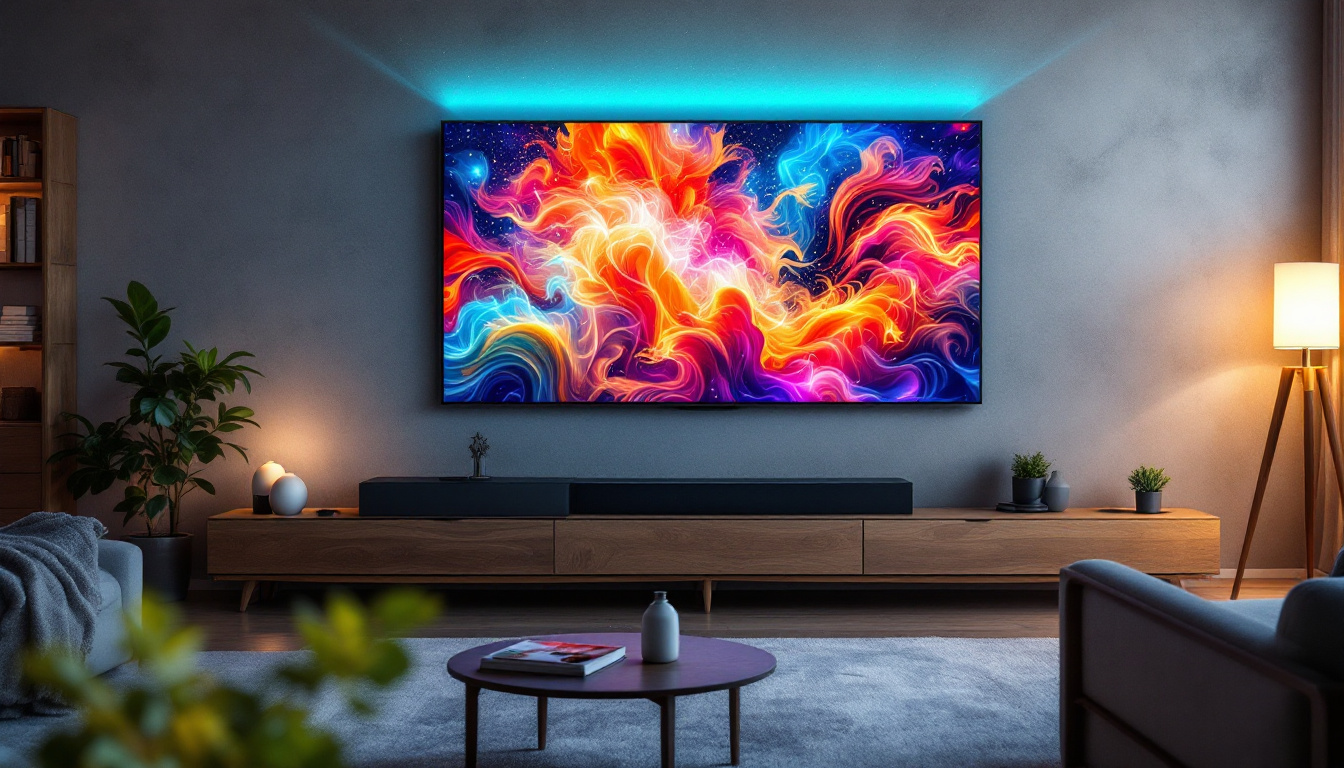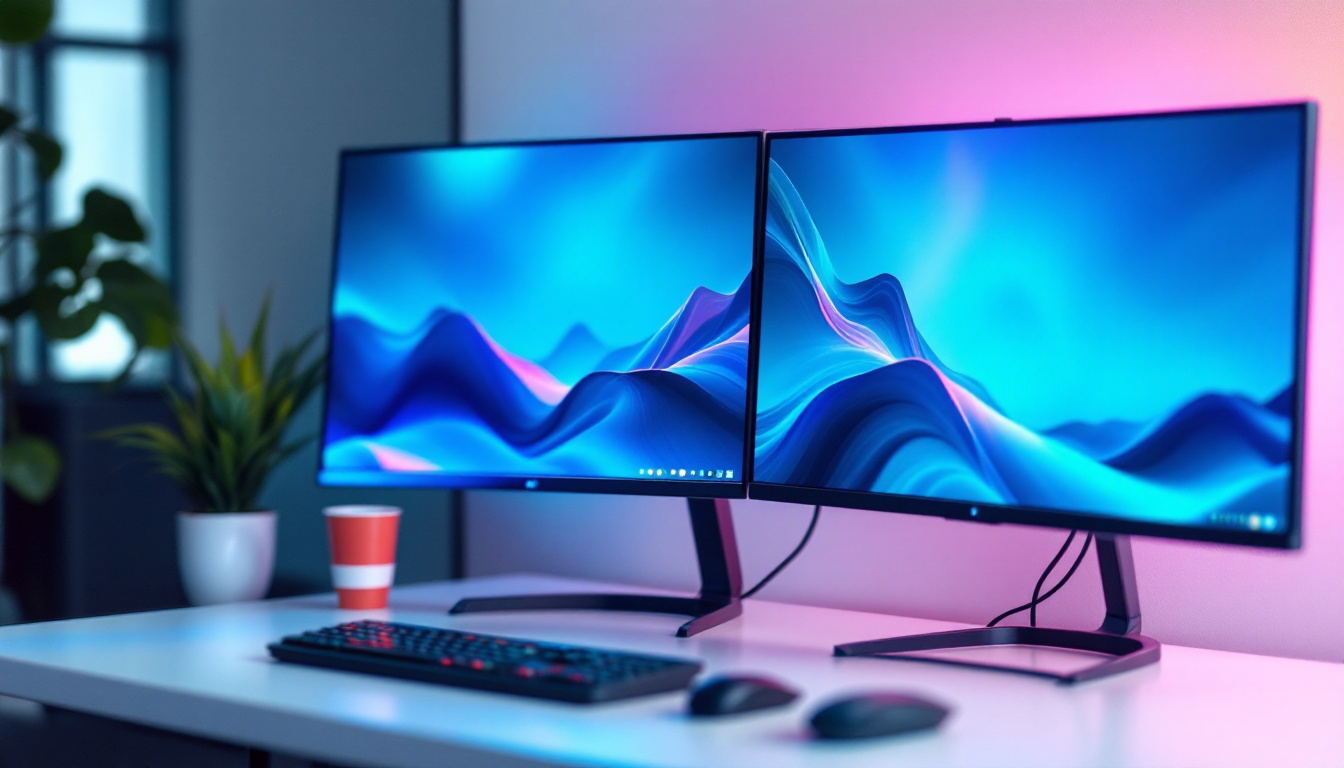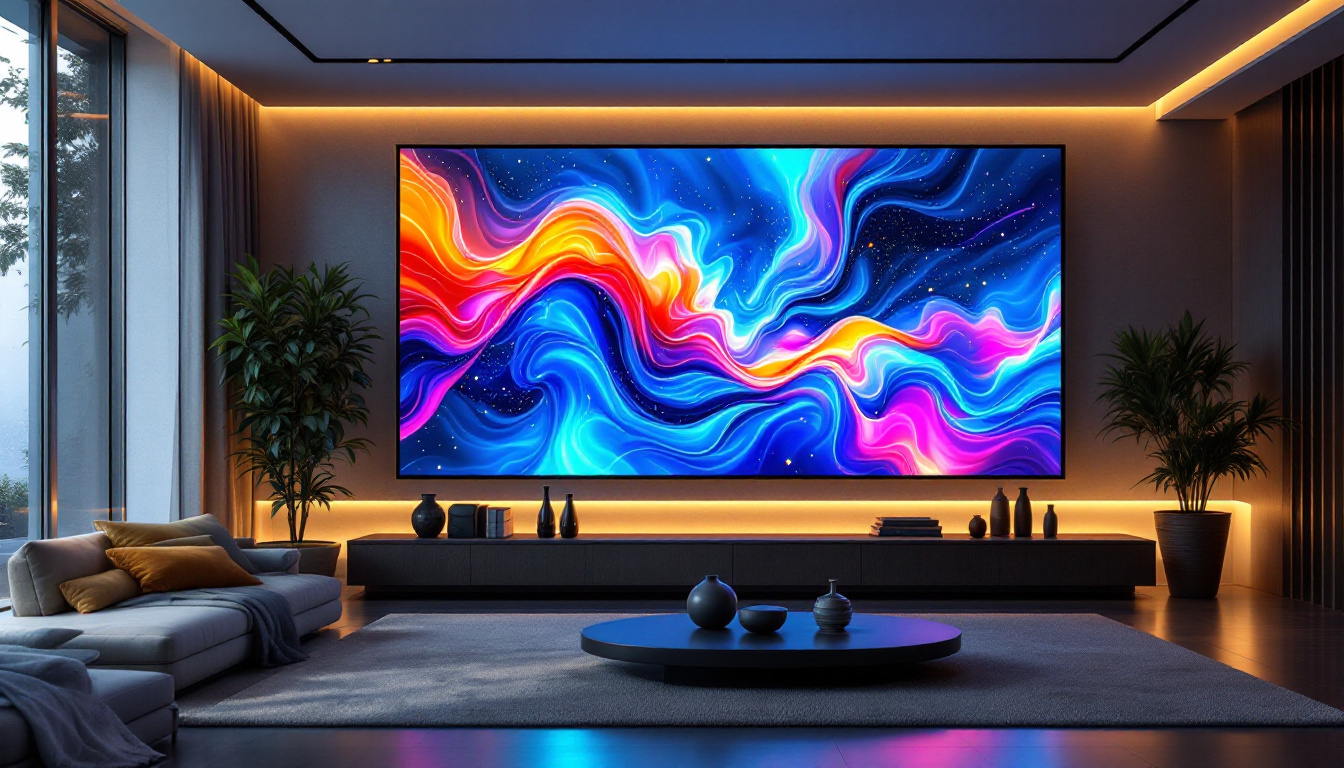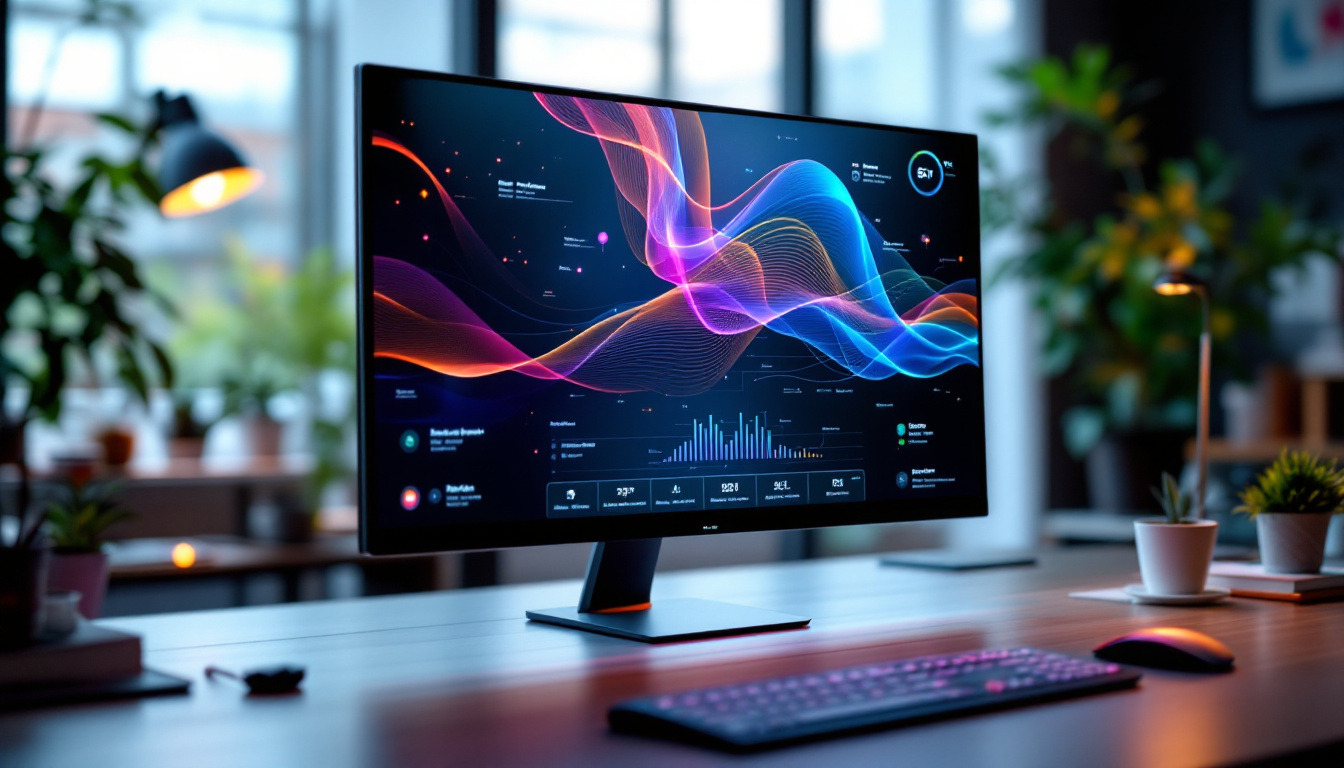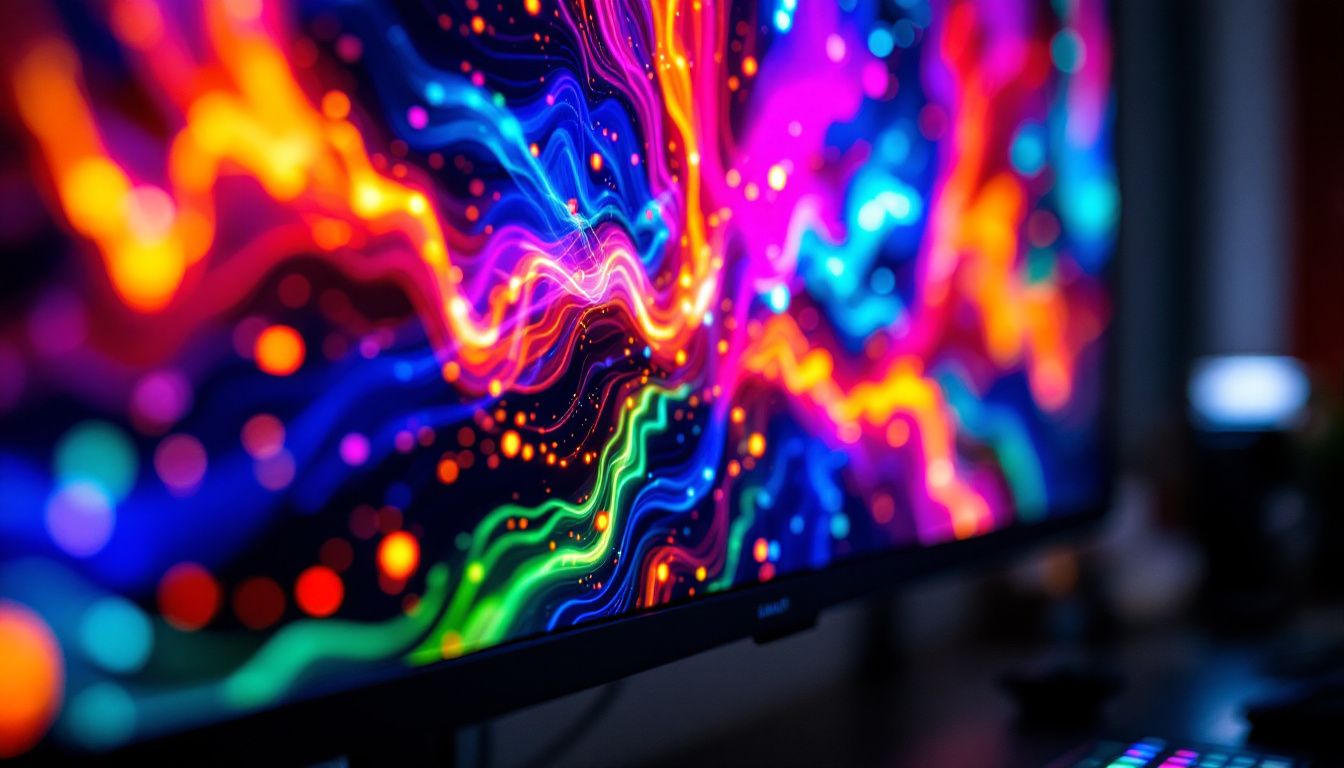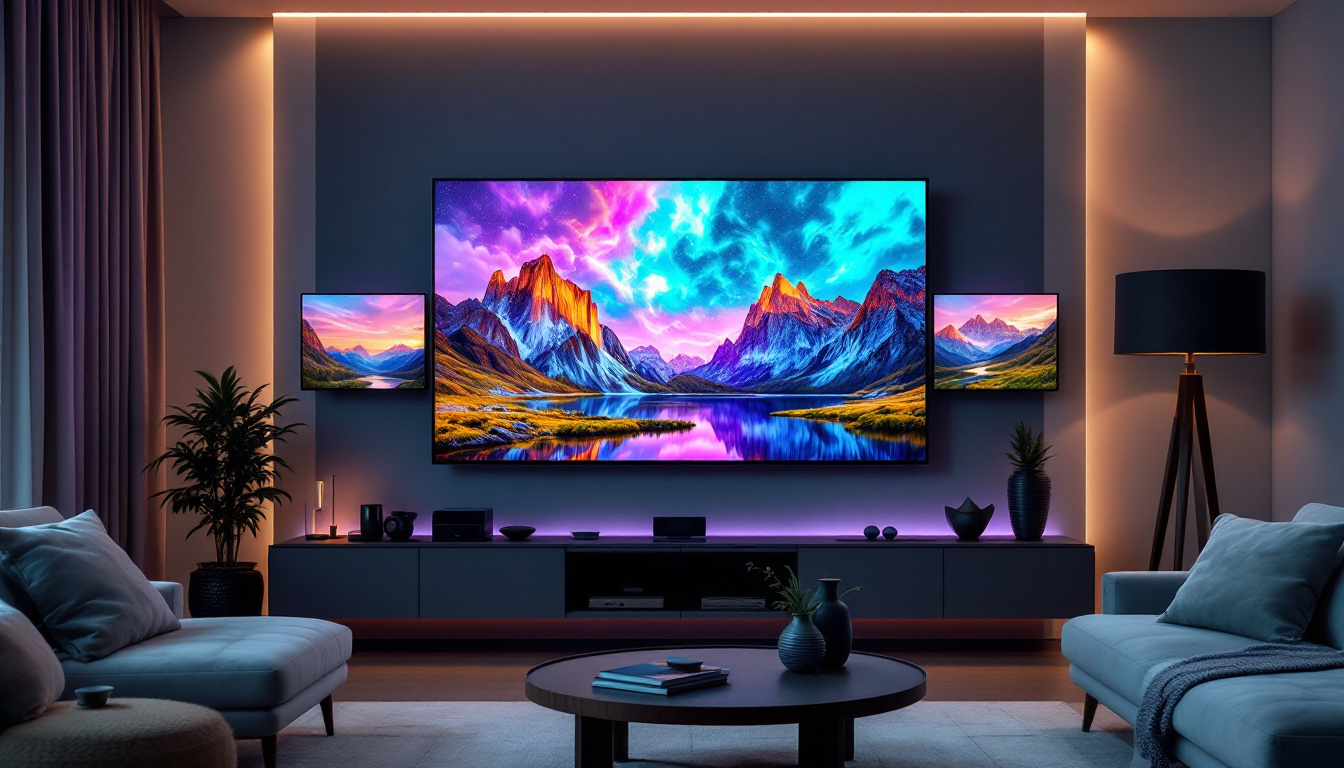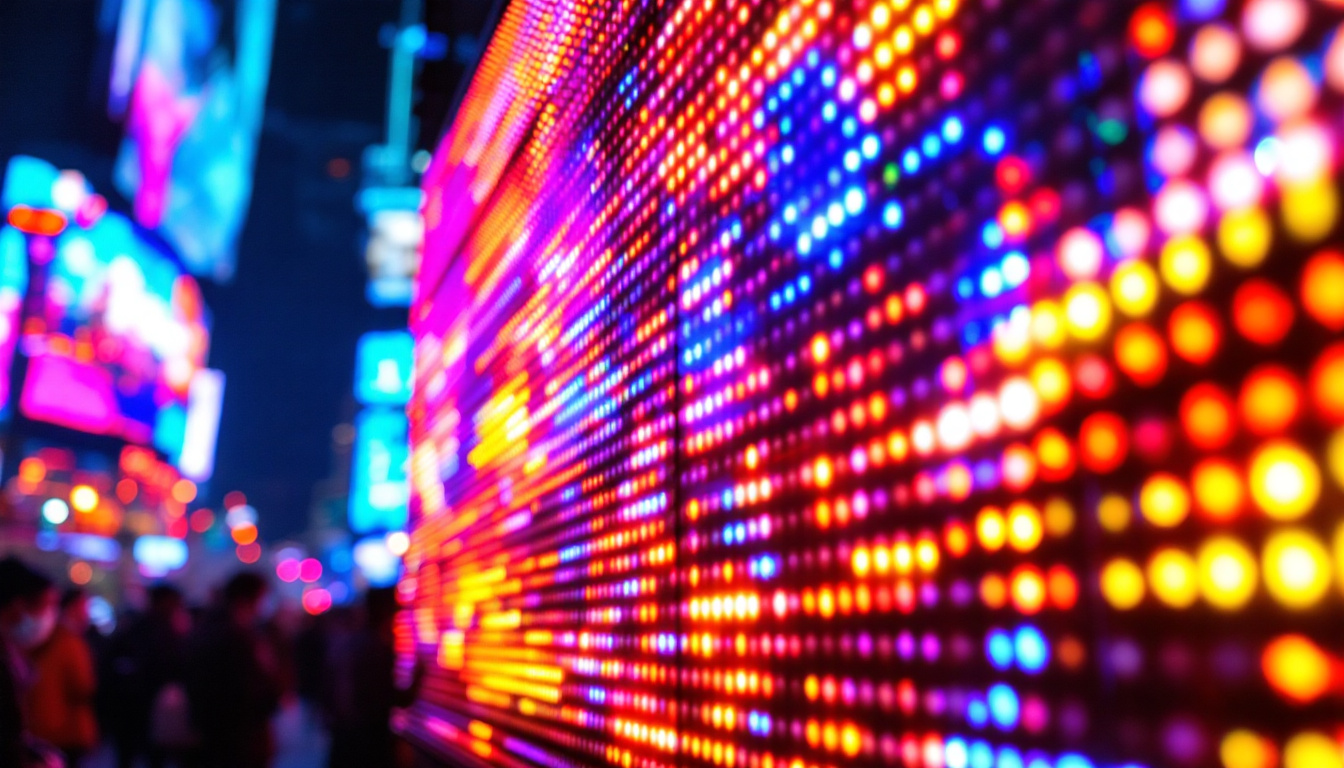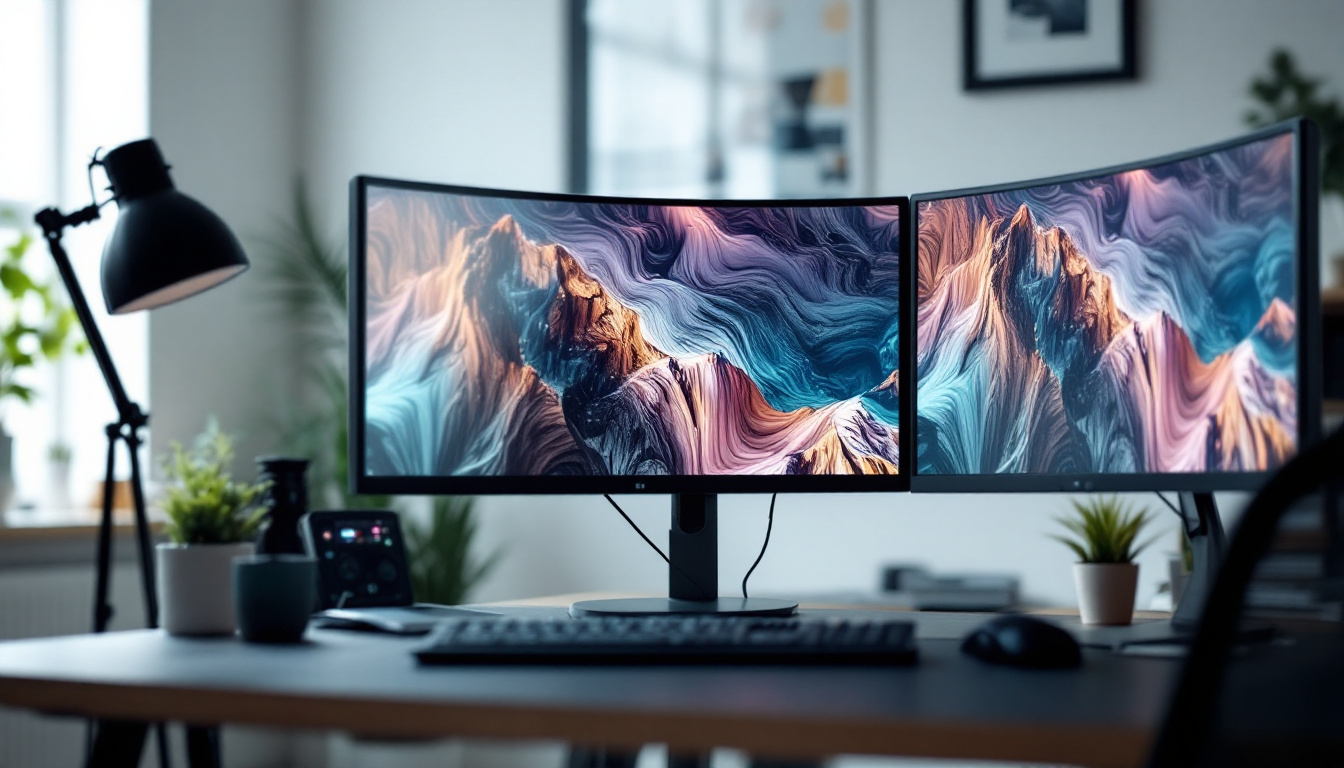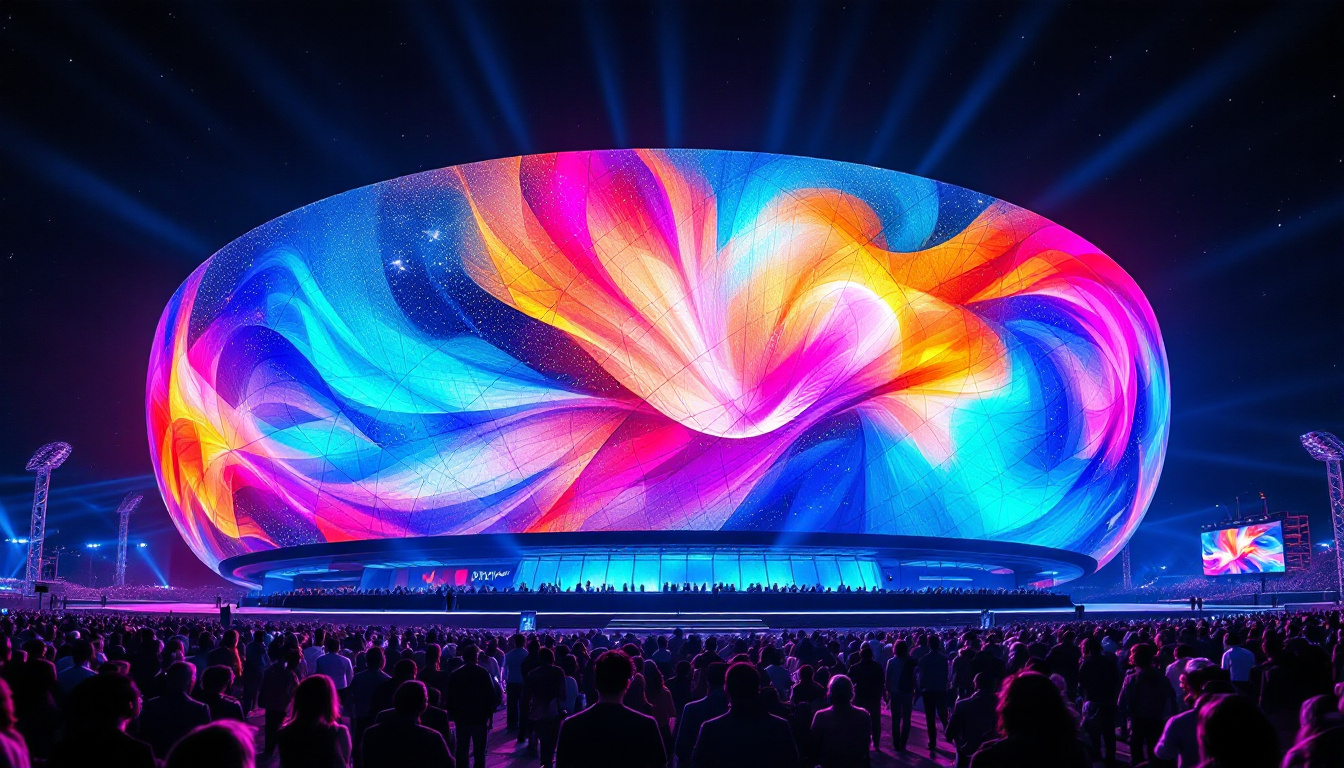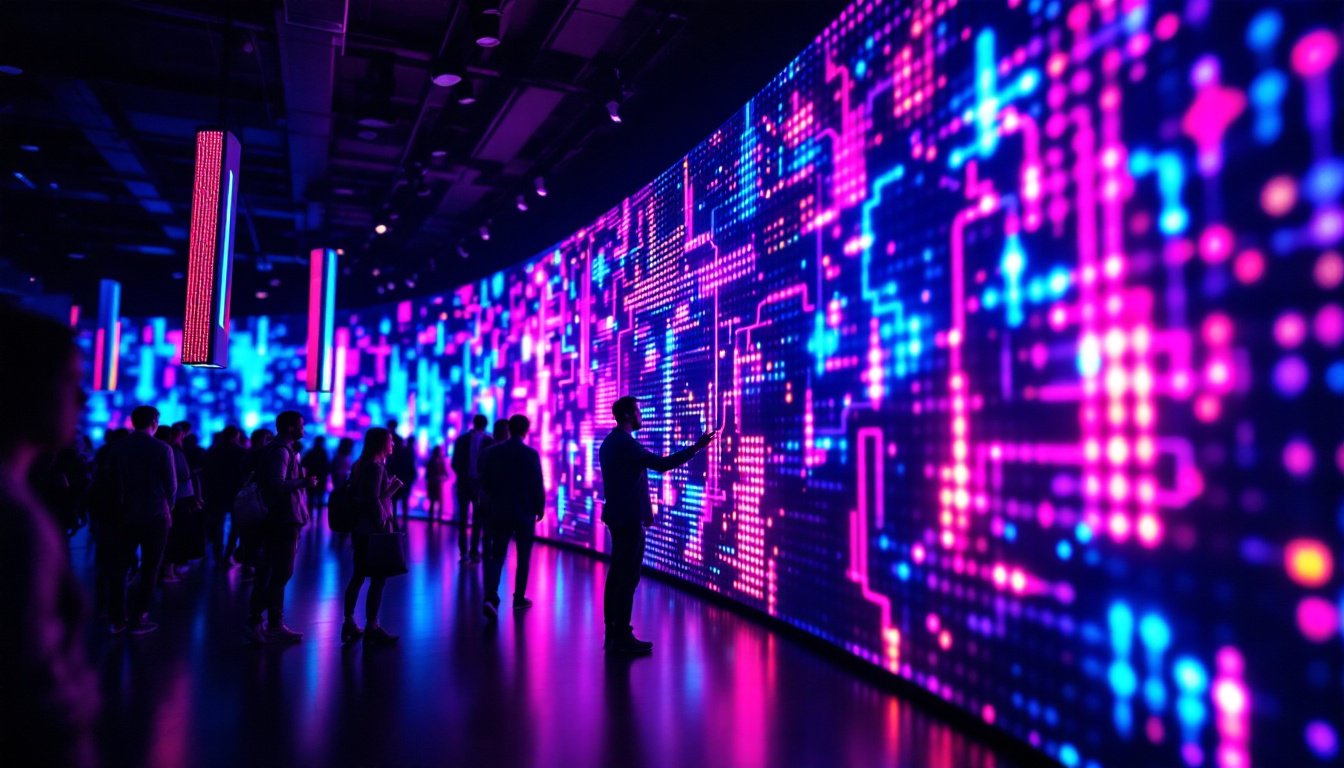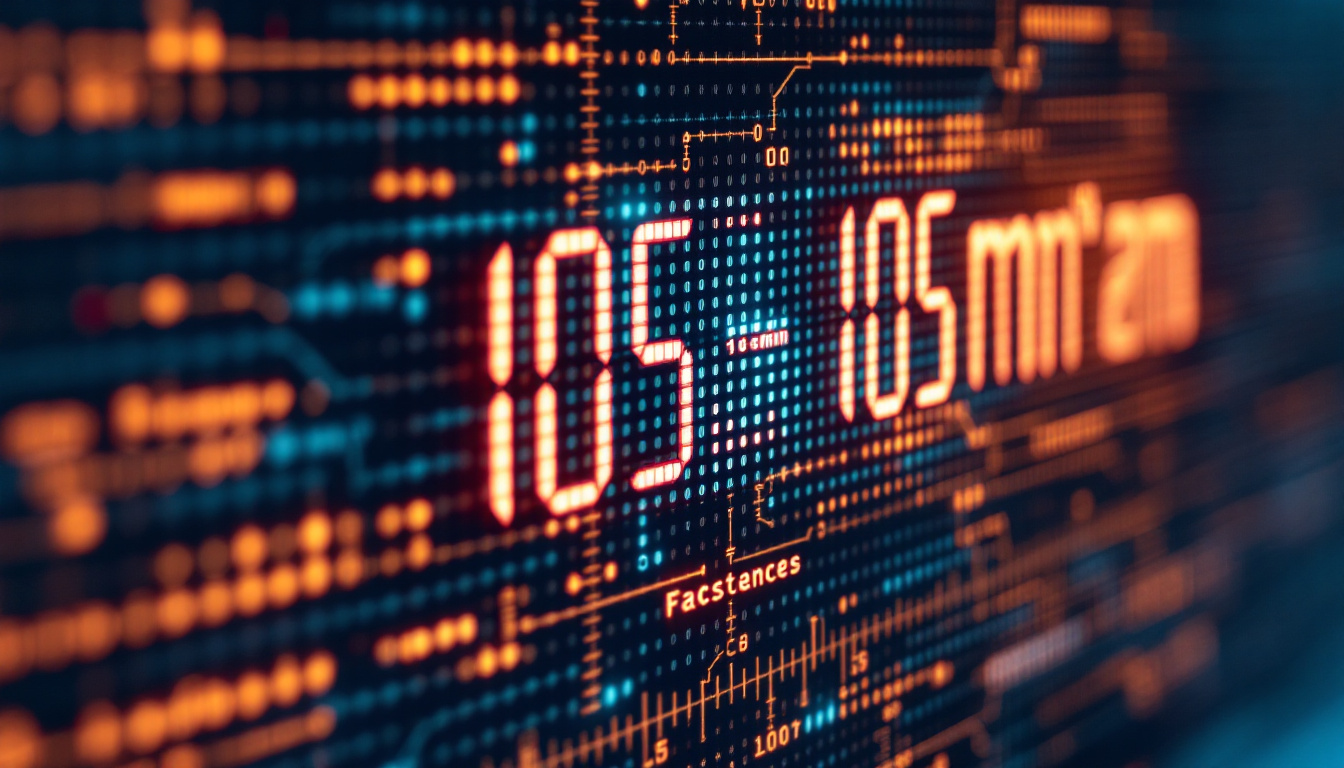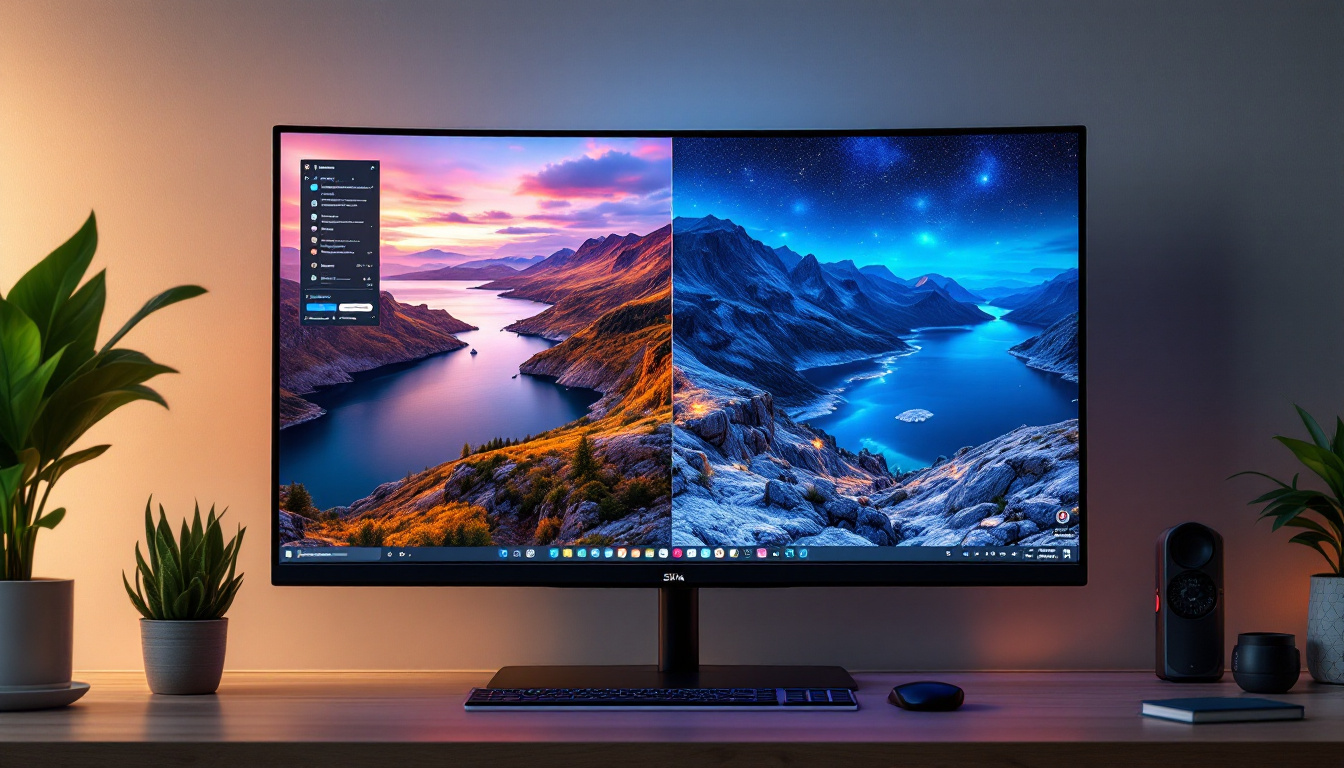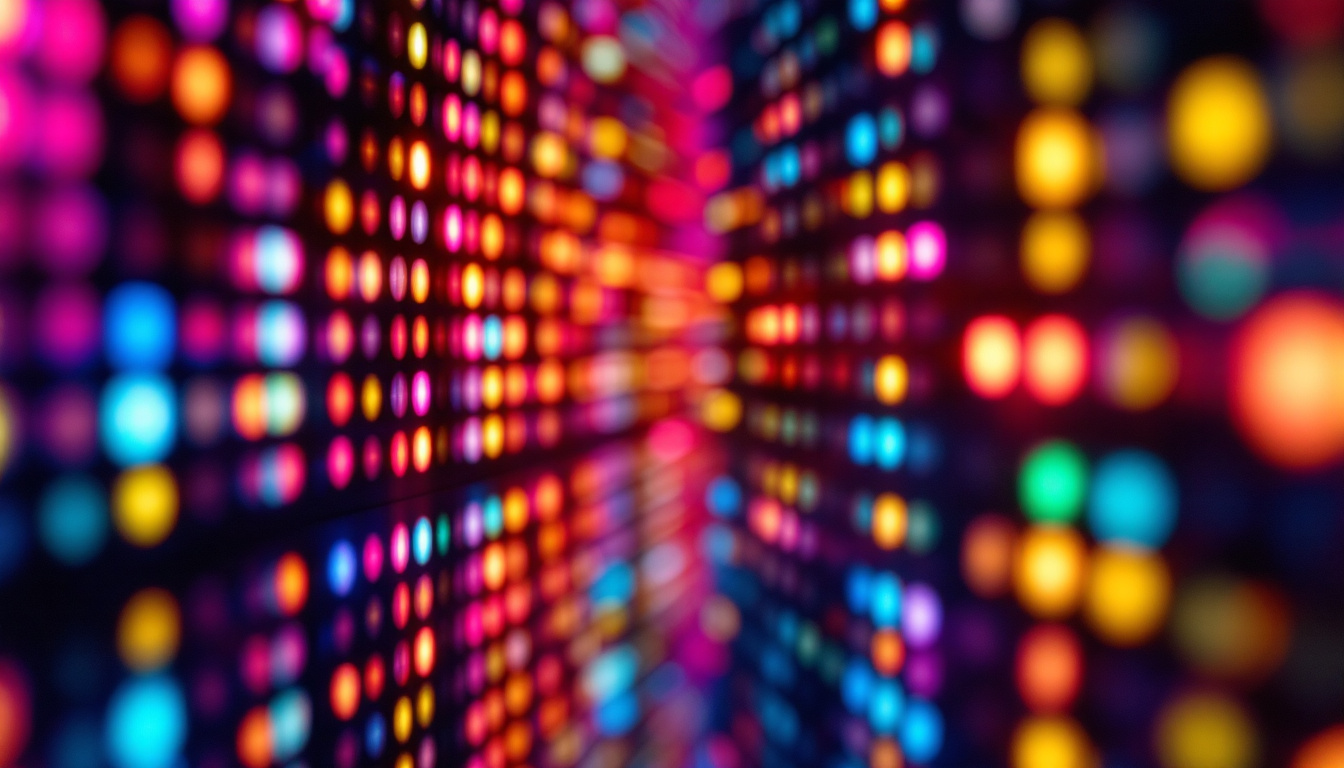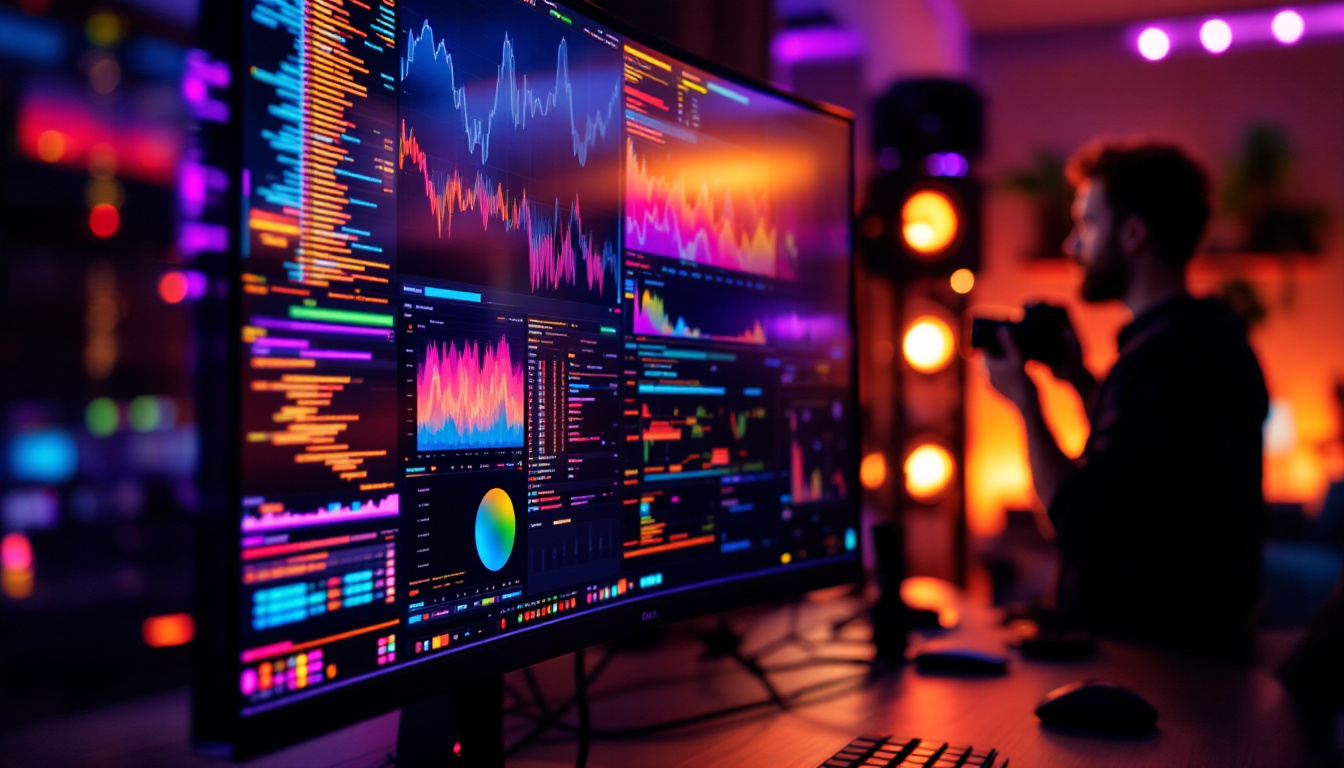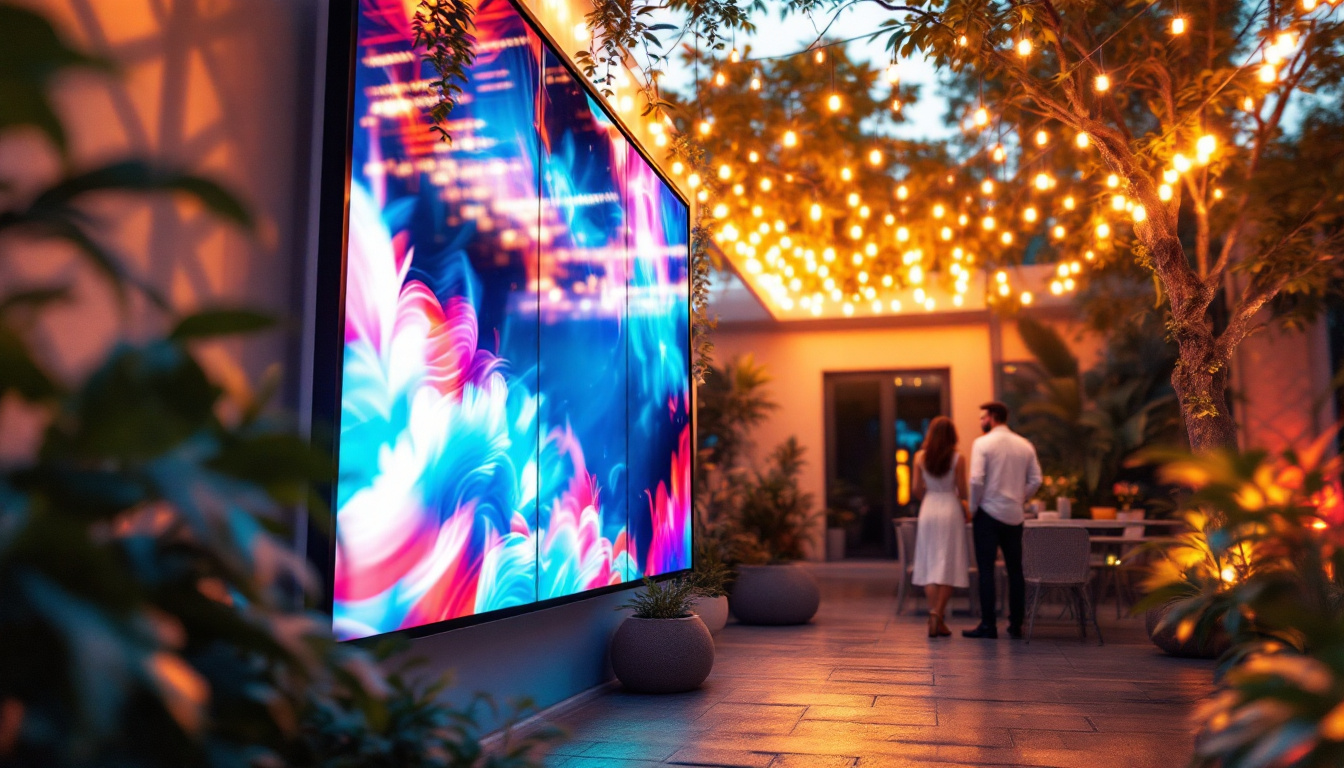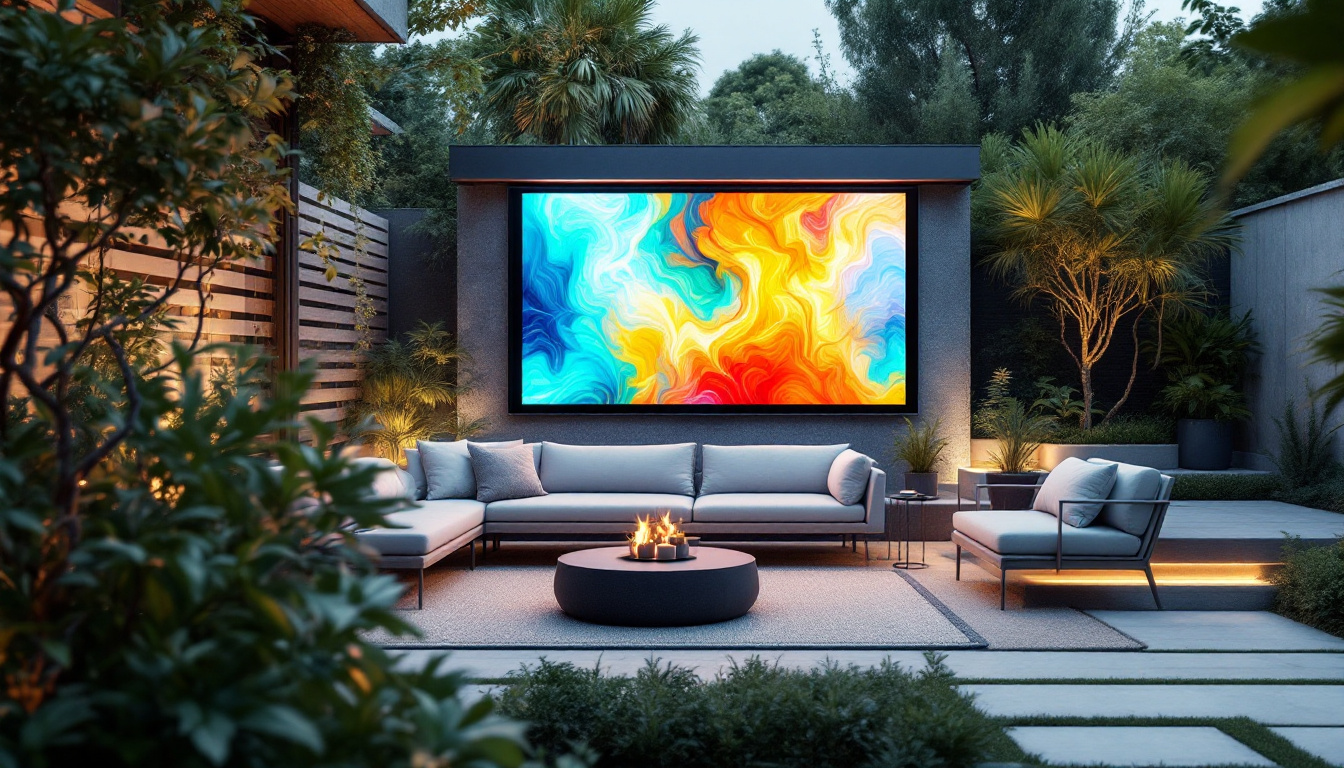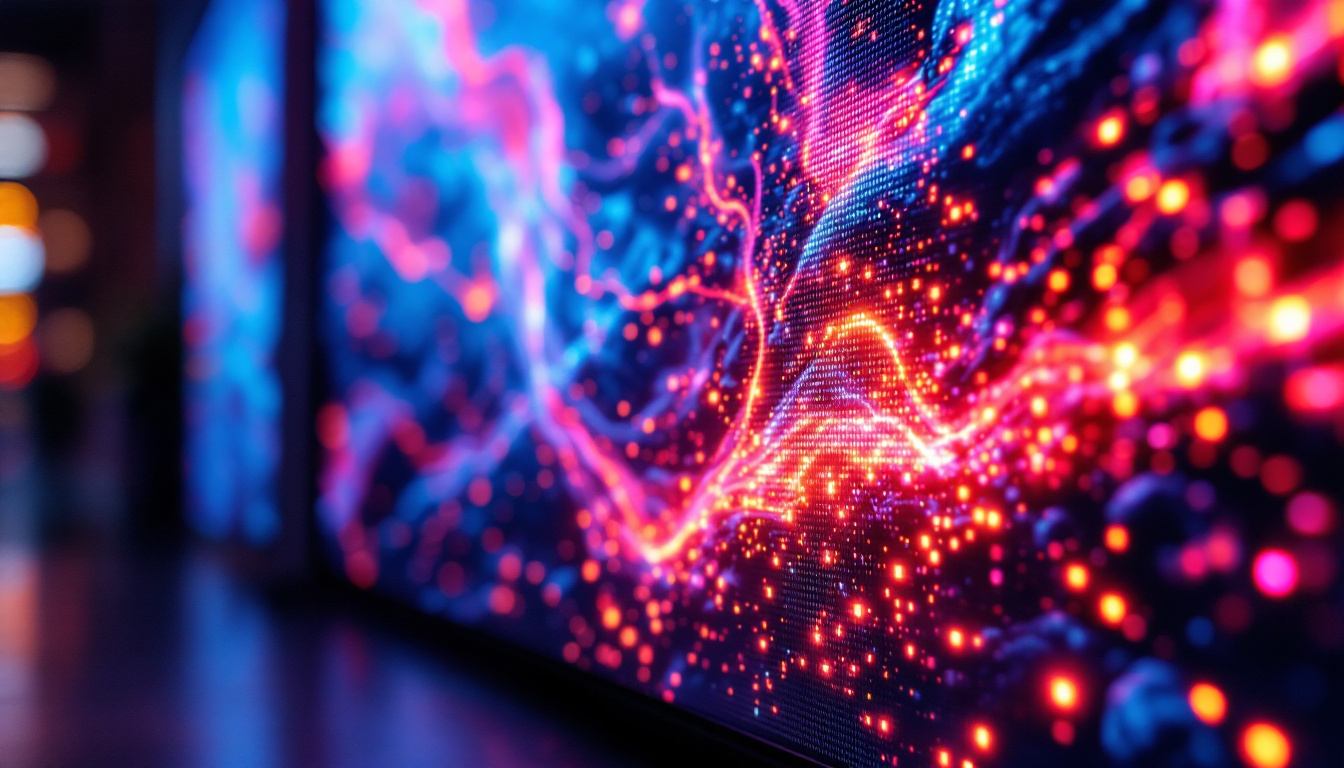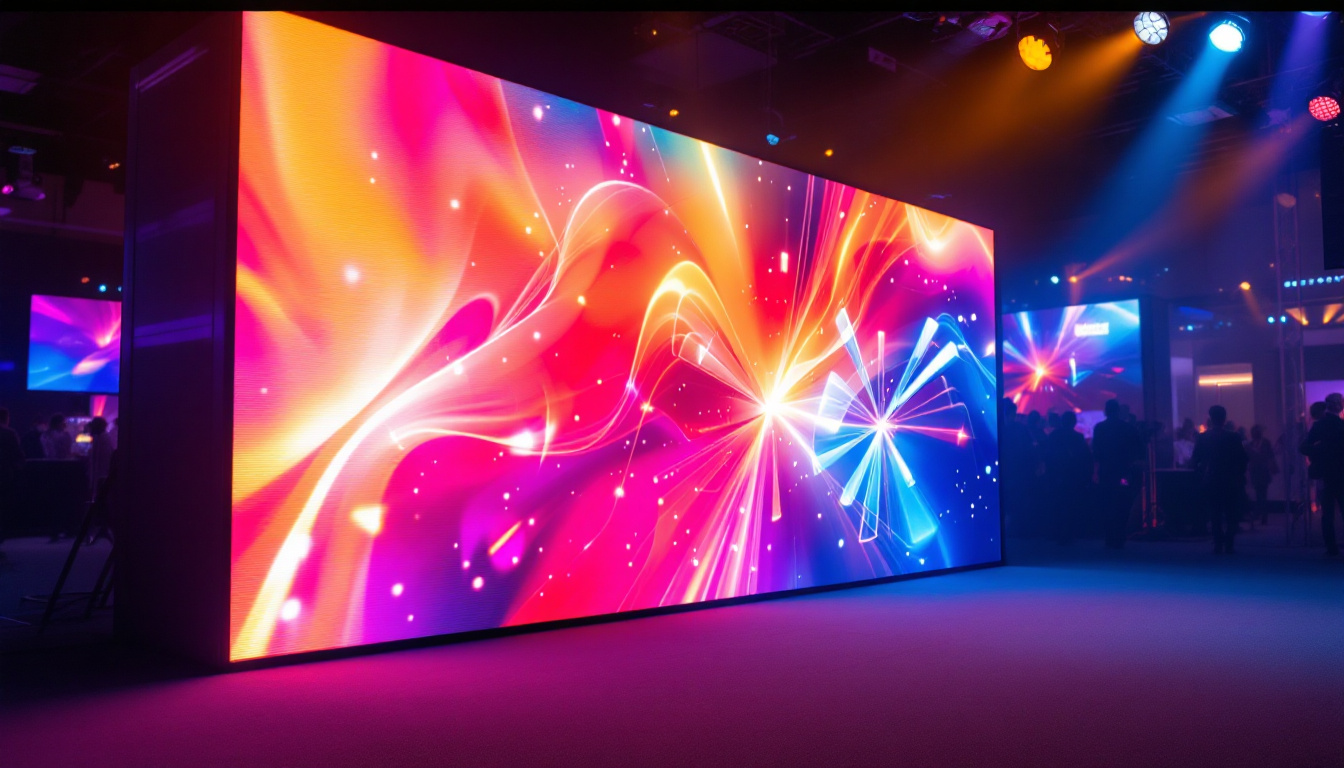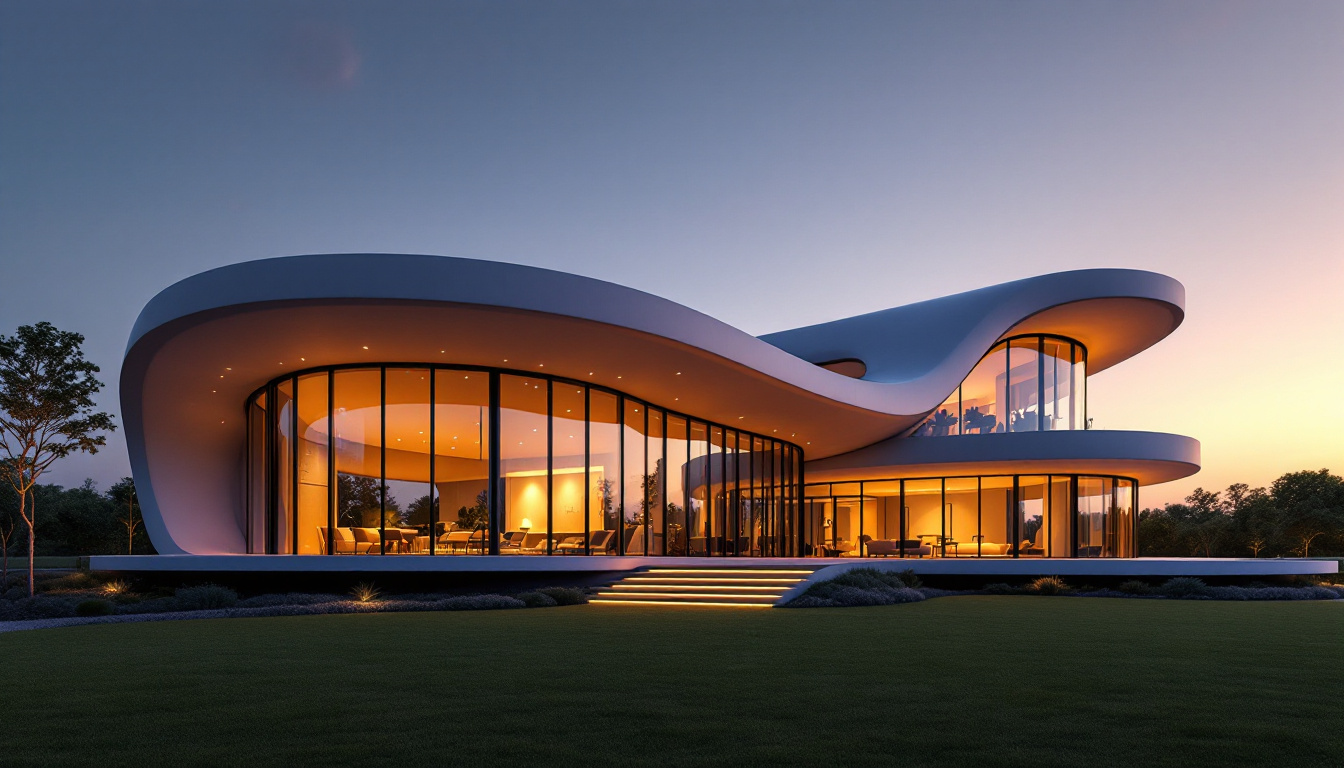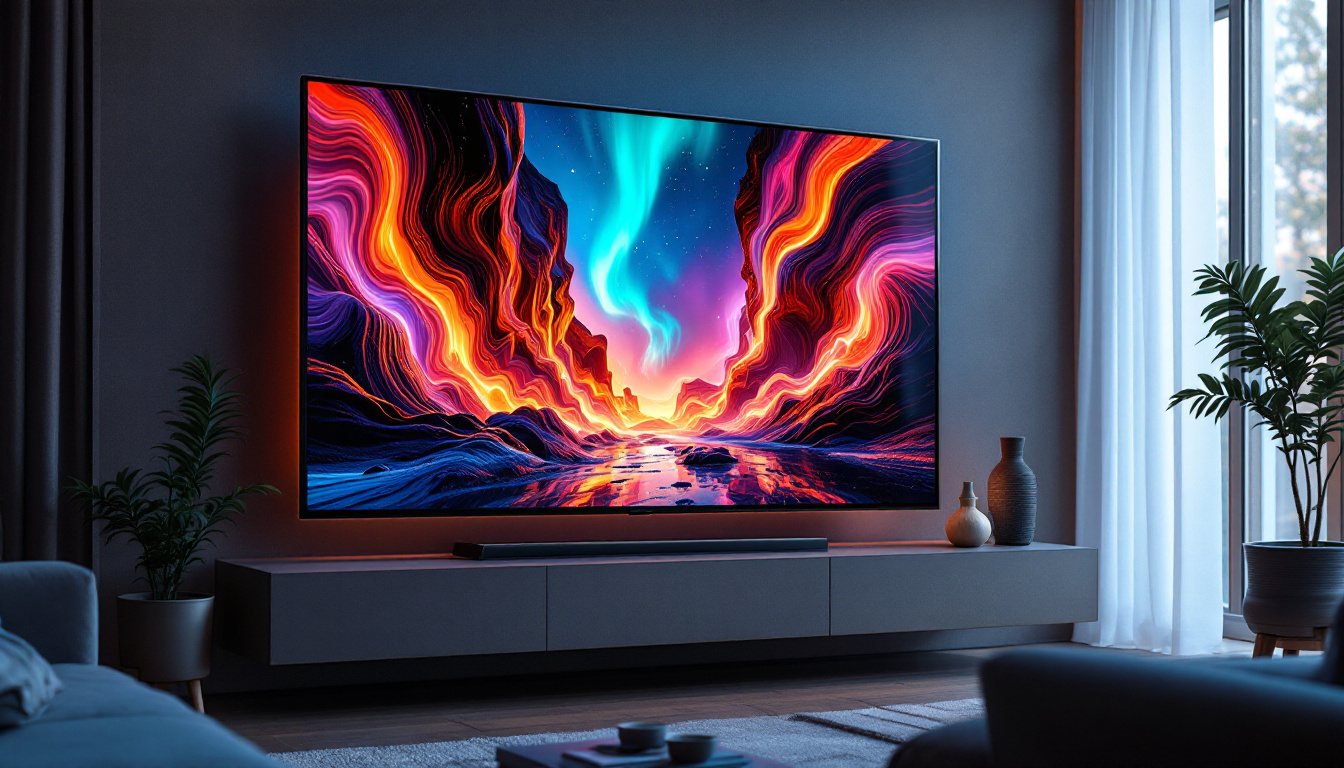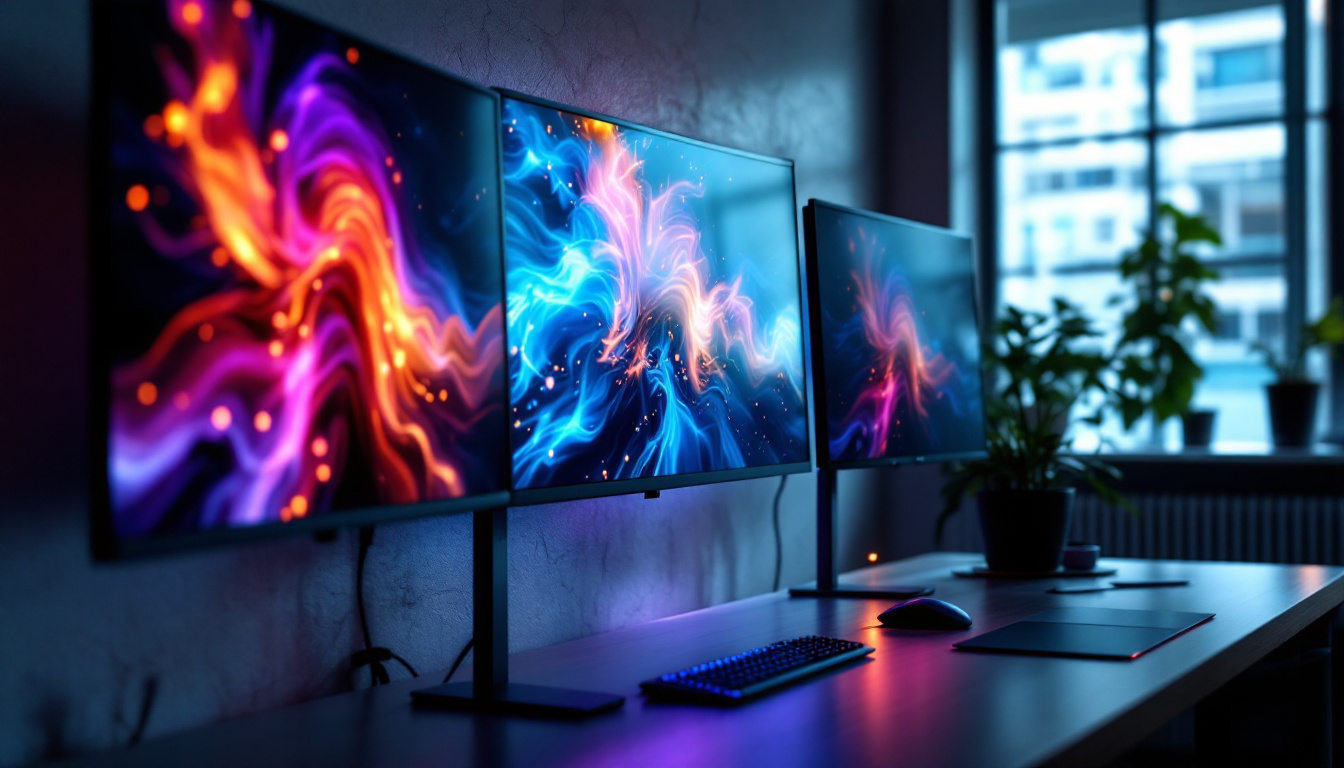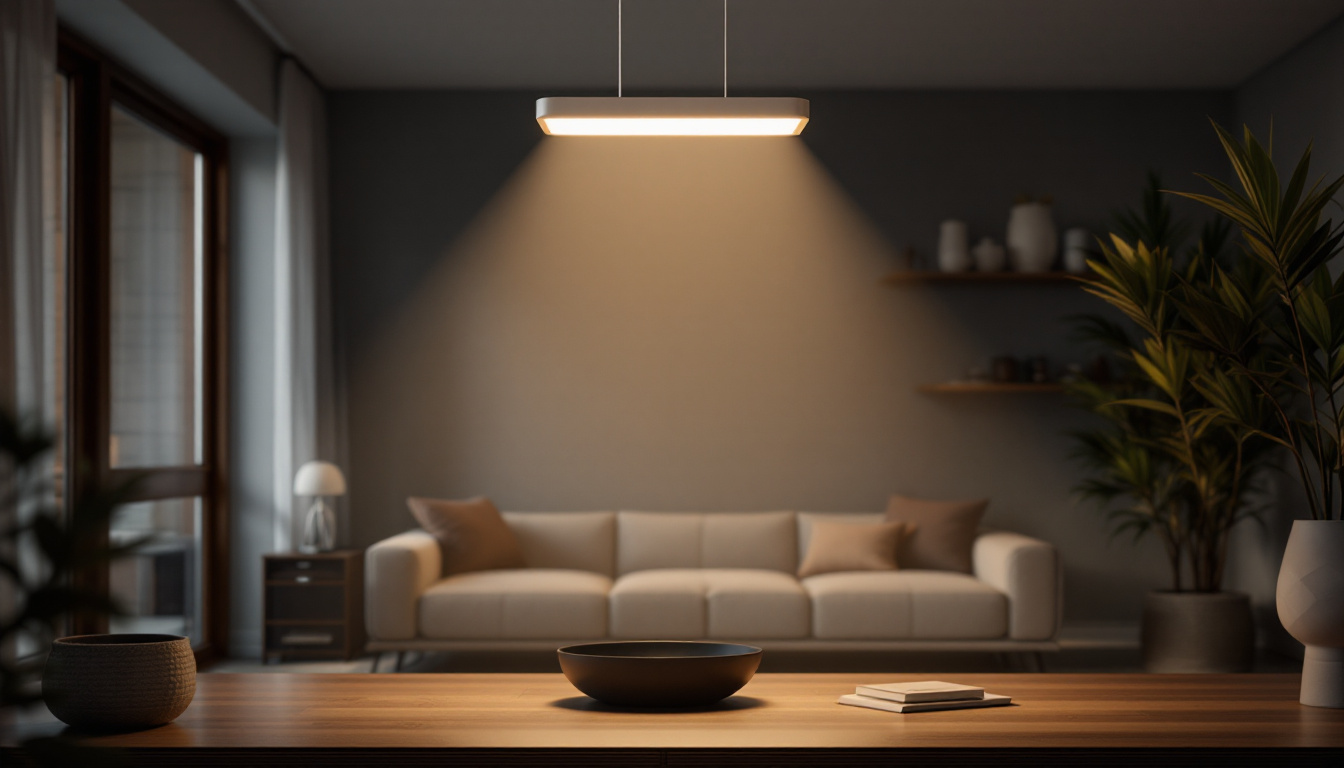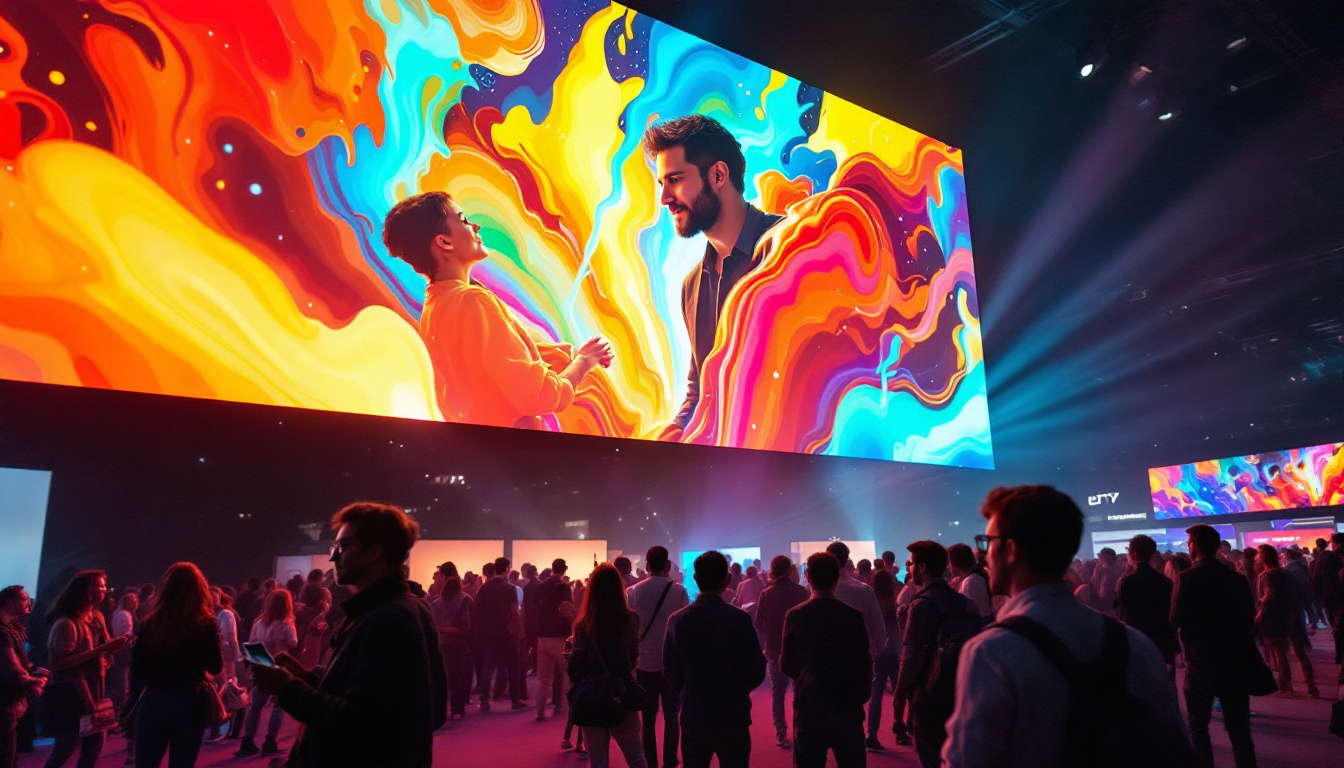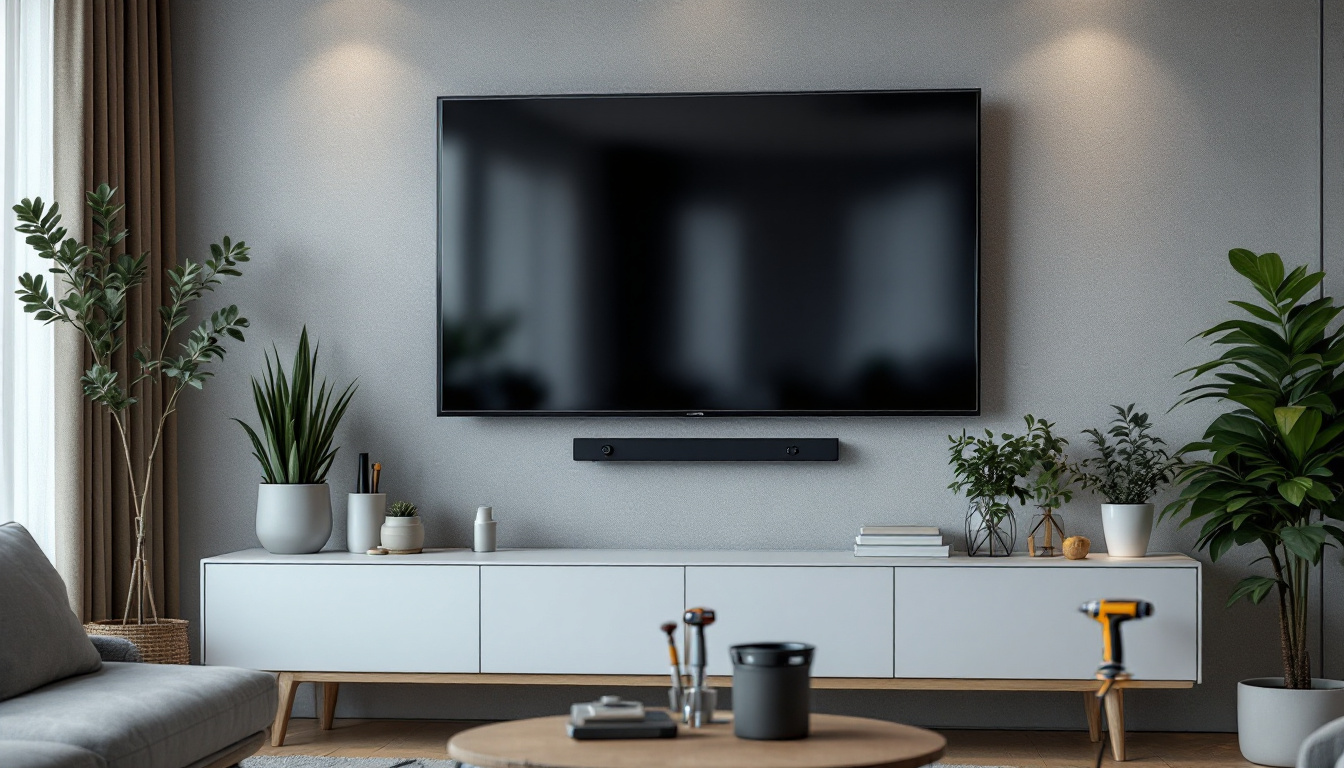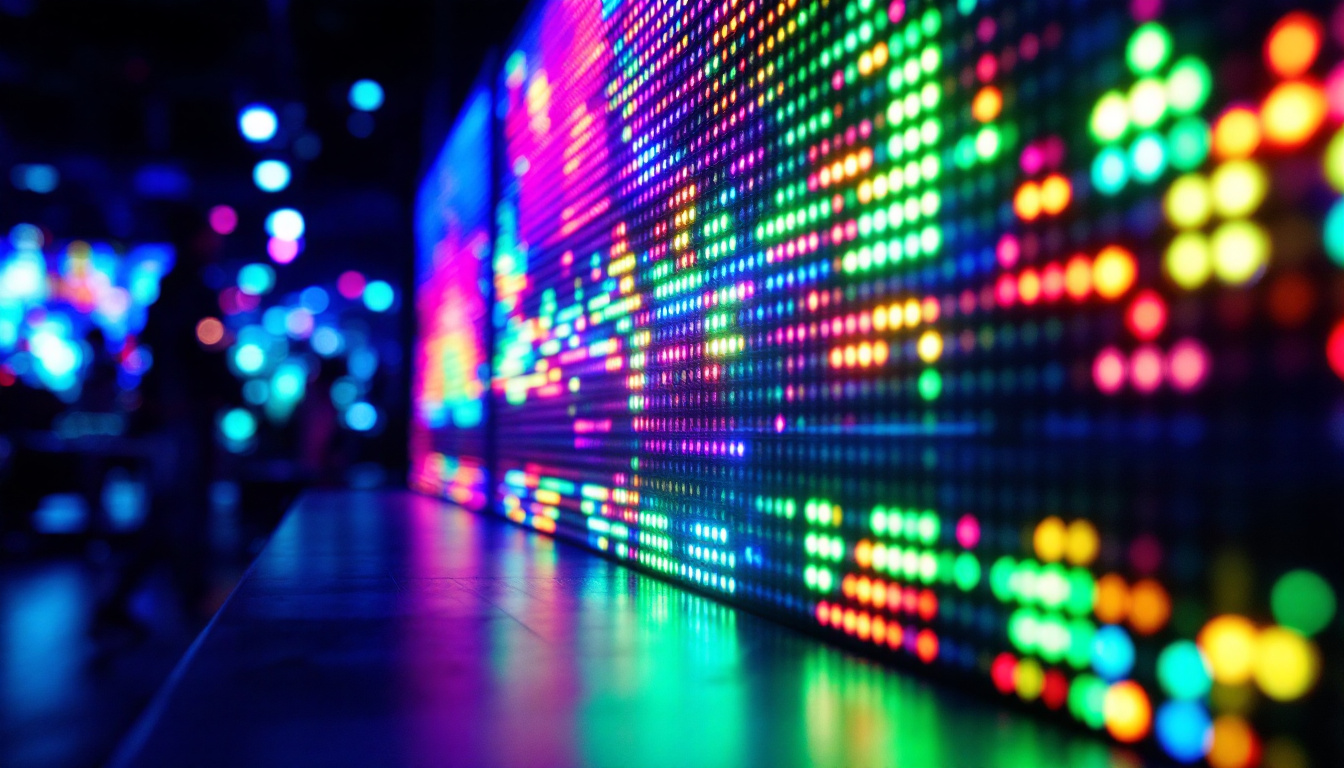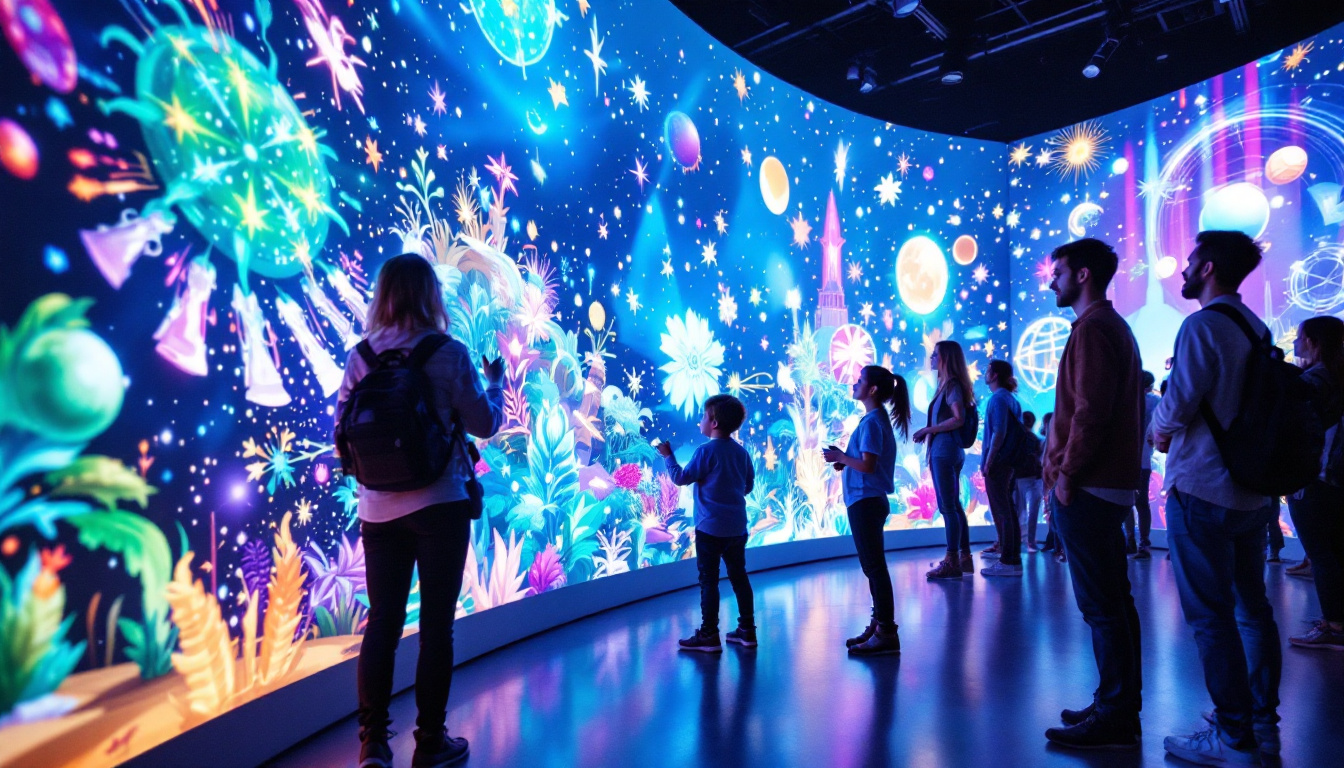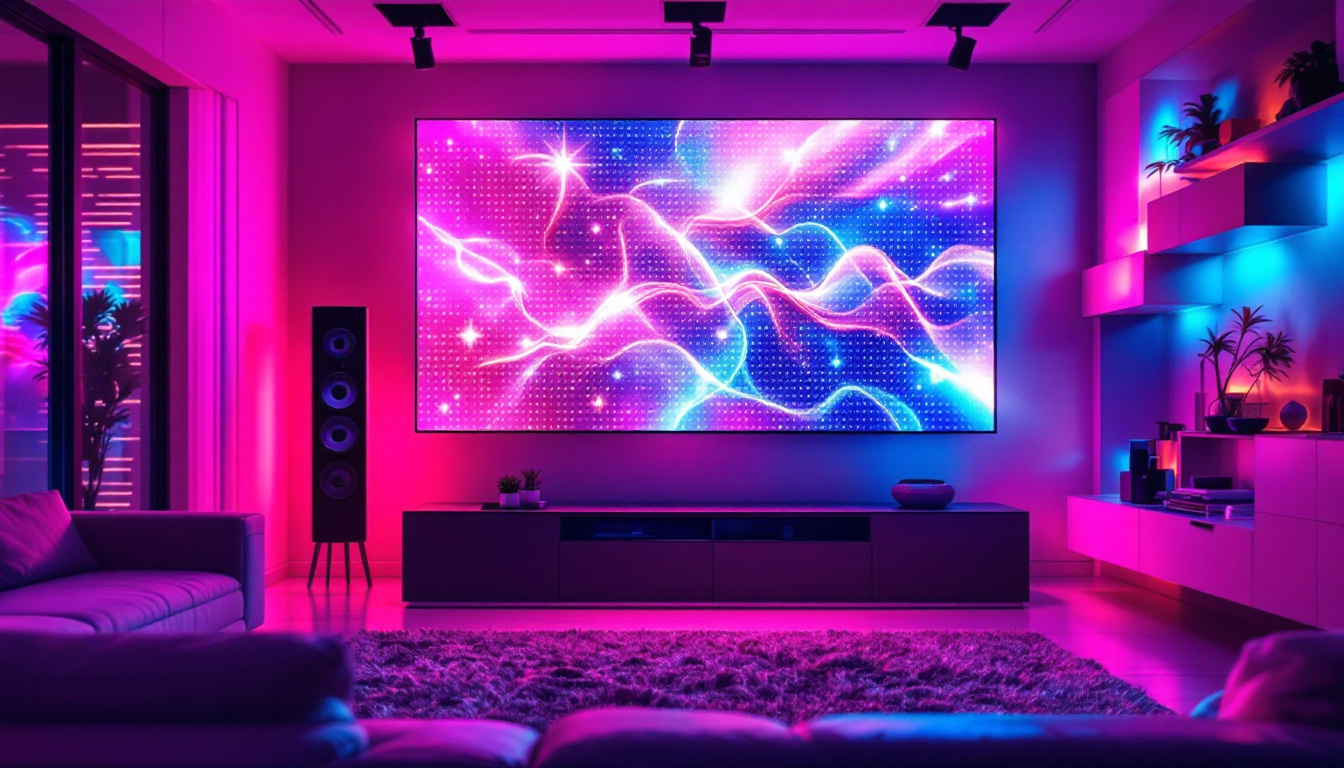In an era where visual technology continues to evolve at a rapid pace, wall projectors have emerged as a popular choice for both personal and professional environments. With their ability to transform any flat surface into a vibrant display, these devices are revolutionizing how we experience media, presentations, and even art. This article delves into the mechanics of LED display technology in wall projectors, exploring their benefits, applications, and the future of projection technology.
Understanding LED Display Technology
LED, or Light Emitting Diode, technology has become synonymous with high-quality visual displays. Unlike traditional projection methods, which rely on bulbs and mirrors, LED projectors utilize a series of small diodes to create images. This fundamental difference in technology leads to several advantages that make LED projectors a compelling choice for various applications.
How LED Projectors Work
At the heart of an LED projector is a light source composed of multiple diodes that emit light when an electric current passes through them. These diodes can produce a wide spectrum of colors, allowing for rich and vibrant images. The light generated by the diodes is directed through a series of lenses and optical components, which help focus and project the image onto a screen or wall.
One of the key aspects of LED technology is its ability to produce high contrast ratios. This means that the difference between the darkest and lightest parts of an image is more pronounced, resulting in clearer and more dynamic visuals. Additionally, LED projectors often incorporate advanced color processing algorithms, which further enhance the quality of the projected image. This capability is particularly beneficial in environments with varying lighting conditions, as it ensures that the projected content remains visible and engaging regardless of ambient light.
Advantages of LED Projectors
LED projectors offer numerous advantages over traditional projection technologies. One of the most significant benefits is their energy efficiency. LED lights consume less power than traditional bulbs, making them a more environmentally friendly option. This efficiency also translates to longer operational life, with many LED projectors lasting up to 30,000 hours or more, significantly reducing maintenance costs.
Another advantage is the compact size of LED projectors. They are generally lighter and more portable than their bulb-based counterparts, making them ideal for mobile presentations or home use. Furthermore, LED projectors tend to produce less heat, which not only enhances their longevity but also minimizes the need for extensive cooling systems, contributing to quieter operation. This feature is particularly advantageous in settings such as classrooms or conference rooms, where a quieter environment can enhance focus and engagement during presentations.
Moreover, LED projectors are increasingly equipped with smart technology, allowing for seamless connectivity with various devices. Many models now support wireless connections, enabling users to project content directly from smartphones, tablets, or laptops without the hassle of cables. This feature not only simplifies the setup process but also enhances the overall user experience, making it easier to share multimedia content in real-time. As technology continues to evolve, we can expect further innovations in LED projectors, potentially integrating augmented reality features or interactive capabilities that could transform how we engage with visual content.
Applications of Wall Projectors
The versatility of wall projectors makes them suitable for a wide range of applications. From educational settings to home entertainment, these devices can enhance the viewing experience in various environments.
Educational Use
In classrooms and lecture halls, LED wall projectors have become invaluable tools for educators. They facilitate interactive learning by allowing teachers to display multimedia content, such as videos, slideshows, and educational software, directly onto a large screen. This not only captures students’ attention but also aids in better retention of information.
Moreover, the portability of LED projectors enables educators to easily set up presentations in different locations, whether it be a traditional classroom, an outdoor setting, or a conference room. This flexibility fosters a more dynamic learning environment, encouraging collaboration and engagement among students. Additionally, many projectors now come equipped with interactive features, such as touch capabilities or compatibility with styluses, allowing students to participate actively in lessons. This hands-on approach can significantly enhance critical thinking and problem-solving skills, making learning a more engaging and enjoyable experience.
Home Entertainment
For home theater enthusiasts, wall projectors offer an immersive viewing experience that is hard to replicate with standard televisions. The ability to project images onto large surfaces allows for a cinematic experience right in the comfort of one’s home. With advancements in LED technology, many projectors now support high-definition resolutions, making them suitable for movie nights, gaming, and sports events.
Additionally, LED projectors can be easily integrated with smart home systems, allowing users to control their viewing experience with voice commands or mobile apps. This seamless integration enhances convenience and elevates the overall entertainment experience. Some projectors even feature built-in streaming capabilities, enabling users to access popular platforms like Netflix and Hulu without needing additional devices. This feature not only simplifies the setup but also allows for a clutter-free living space, making it easier to enjoy a variety of content with family and friends.
Business Presentations
In the corporate world, effective communication is crucial, and wall projectors play a significant role in delivering impactful presentations. LED projectors provide crisp and clear visuals, ensuring that charts, graphs, and other essential data are easily visible to all attendees. This clarity helps to convey messages more effectively, fostering better understanding and engagement during meetings.
Furthermore, many LED projectors come equipped with wireless connectivity options, allowing presenters to connect their devices without the hassle of cables. This feature not only streamlines the setup process but also promotes a more professional appearance during presentations. Some projectors even include built-in collaboration tools that enable multiple users to share their screens simultaneously, facilitating brainstorming sessions and enhancing teamwork. With these capabilities, businesses can leverage technology to drive innovation and improve productivity, making wall projectors an essential asset in today’s fast-paced work environment.
Choosing the Right Wall Projector
With a plethora of options available in the market, selecting the right wall projector can be a daunting task. Several factors should be considered to ensure that the chosen device meets specific needs and requirements.
Resolution and Brightness
Resolution is a critical factor when choosing a wall projector. Higher resolutions, such as Full HD (1920×1080) or 4K (3840×2160), provide sharper images and greater detail, making them ideal for applications where clarity is paramount. For instance, in home theaters or business presentations, high resolution can significantly enhance the viewing experience.
Brightness, measured in lumens, is another essential consideration. A projector with higher lumens will perform better in well-lit environments, ensuring that images remain vibrant and clear. For home use, a brightness level of 1,500 to 2,500 lumens is typically sufficient, while business settings may require projectors with 3,000 lumens or more.
Portability and Connectivity
Portability is an important aspect for those who plan to use their projector in multiple locations. Lightweight models with compact designs are easier to transport, making them suitable for on-the-go presentations or outdoor movie nights. Additionally, it is vital to consider the connectivity options available on the projector. HDMI, USB, and wireless connectivity options can significantly enhance usability, allowing users to connect various devices effortlessly.
Budget Considerations
Budget is an unavoidable factor when selecting a wall projector. LED projectors come in a wide range of prices, and it is essential to find a balance between features and affordability. While it may be tempting to opt for the cheapest option, investing in a quality projector can lead to better performance and longevity. Researching and comparing different models can help identify the best value for money.
The Future of Wall Projectors
The future of wall projectors appears promising, with ongoing advancements in technology poised to enhance their capabilities further. As the demand for high-quality visual displays continues to grow, manufacturers are focusing on innovation to meet consumer expectations.
Emerging Technologies
One of the most exciting developments in projector technology is the integration of laser light sources. Laser projectors offer several advantages over traditional LED models, including higher brightness levels, improved color accuracy, and longer lifespan. This technology is expected to become more mainstream, providing users with even better visual experiences.
Additionally, the rise of smart projectors, equipped with built-in streaming capabilities and smart features, is transforming how users interact with their devices. These projectors can connect to the internet, allowing users to access content directly without the need for external devices. This convenience is likely to become a standard feature in future models.
Interactive Features
Another trend gaining traction is the incorporation of interactive features in wall projectors. These features enable users to engage with the projected content directly, making presentations more dynamic and participatory. For instance, touch-sensitive surfaces or gesture recognition technology can allow users to navigate through presentations or manipulate images in real-time.
The integration of augmented reality (AR) and virtual reality (VR) capabilities is also on the horizon. This evolution could provide users with immersive experiences that blend the physical and digital worlds, opening new avenues for creativity and interaction.
Conclusion
Wall projectors equipped with LED display technology are transforming the way we consume and interact with visual content. Their energy efficiency, portability, and superior image quality make them an attractive choice for a variety of applications, from education to entertainment and business. As technology continues to advance, the future of wall projectors promises even more exciting developments, enhancing the way we experience visual media.
Whether for a home theater setup, a classroom, or a corporate environment, investing in a quality wall projector can significantly elevate the viewing experience. With careful consideration of factors such as resolution, brightness, and connectivity, users can find the perfect projector to meet their needs and enjoy the benefits of this innovative technology.
Discover LumenMatrix LED Display Solutions
Ready to elevate your visual experience with the latest in LED display technology? Look no further than LumenMatrix, a pioneer in crafting mesmerizing LED displays that bring your content to life. Whether you’re seeking to captivate students in an educational setting, dazzle audiences in your home theater, or deliver impactful presentations in the corporate world, LumenMatrix offers a comprehensive range of solutions tailored to your needs. From Indoor and Outdoor LED Wall Displays to innovative LED Sports and Transparent Displays, our mission is to transform how you communicate visually. Check out LumenMatrix LED Display Solutions today and step into a world where clarity, engagement, and cutting-edge technology meet.

